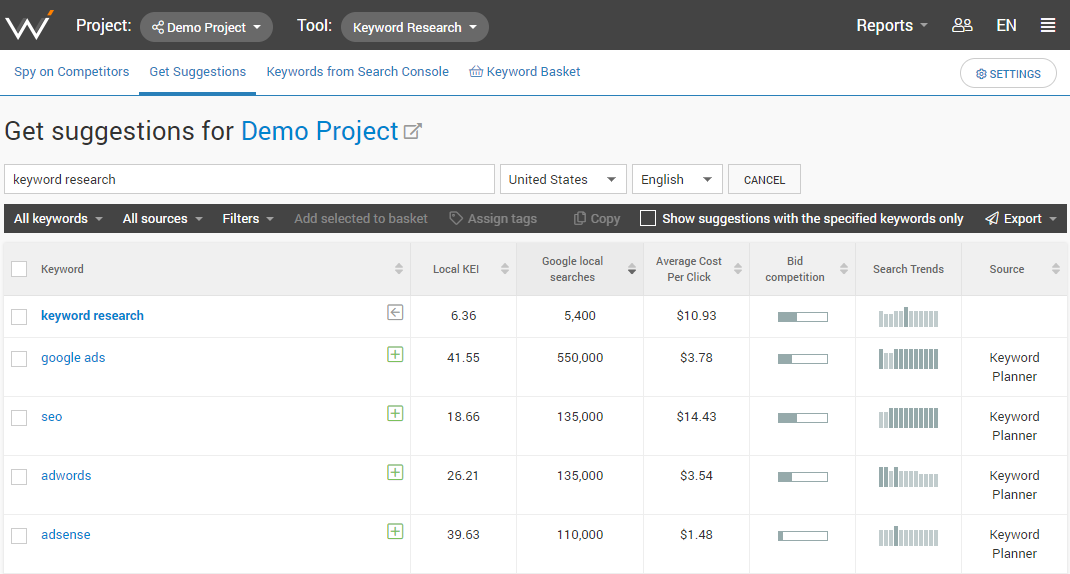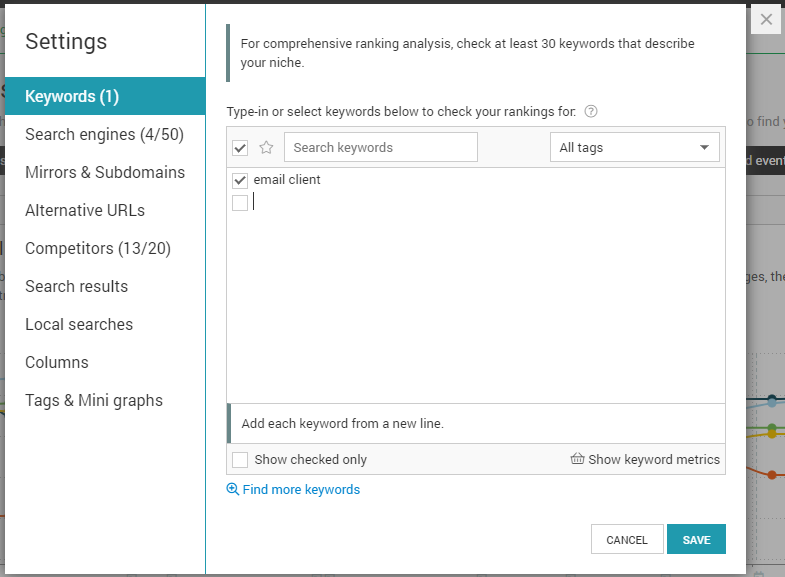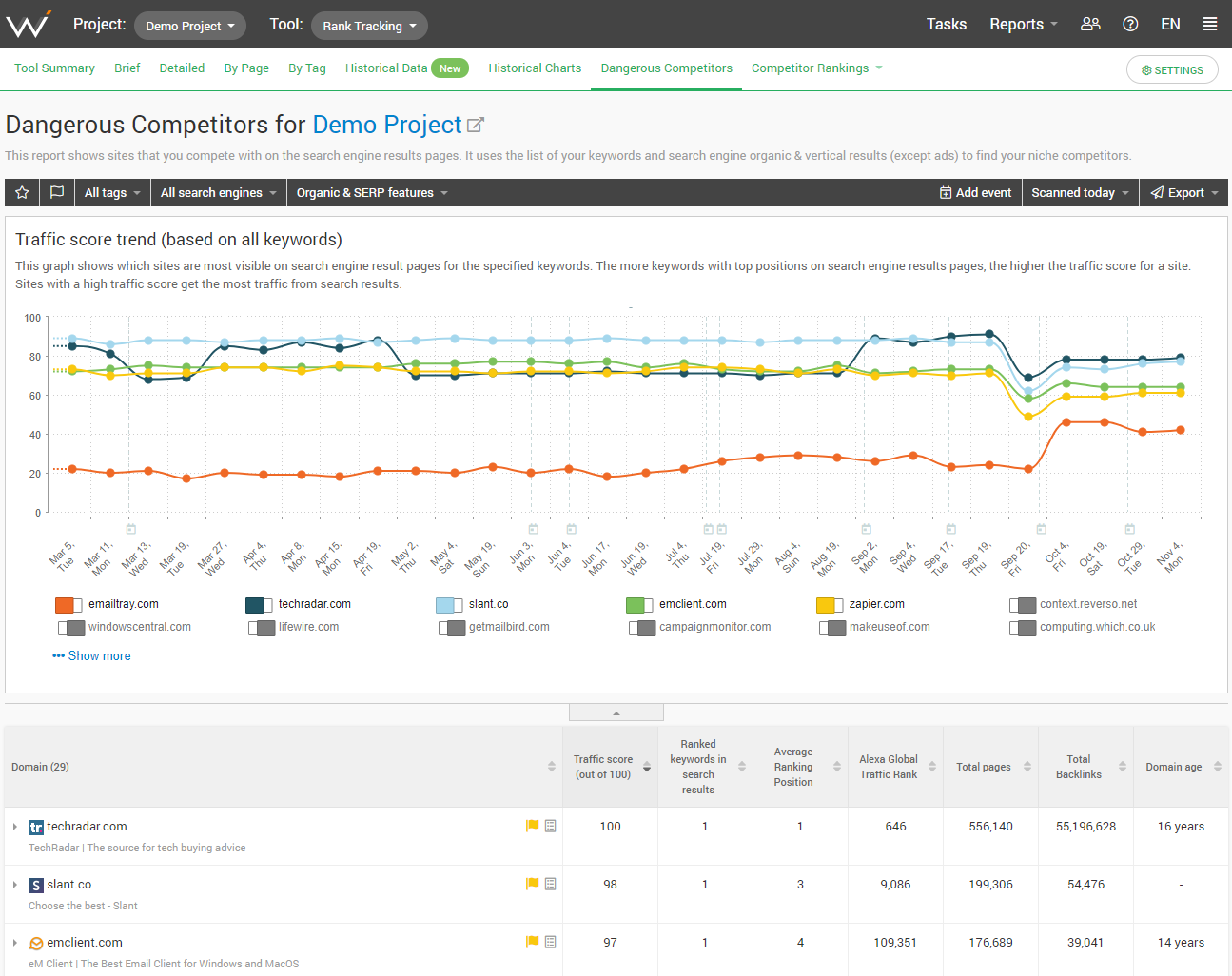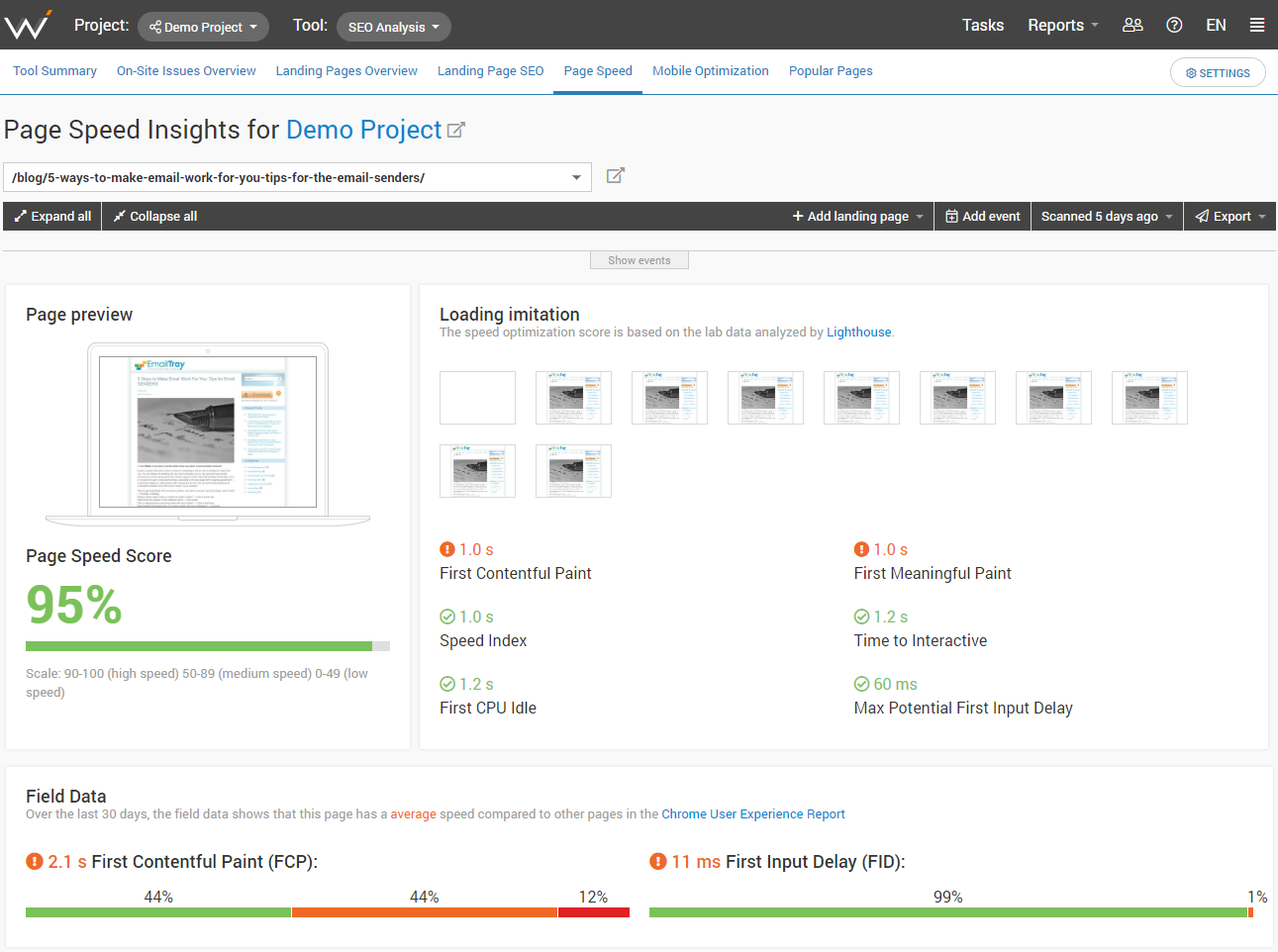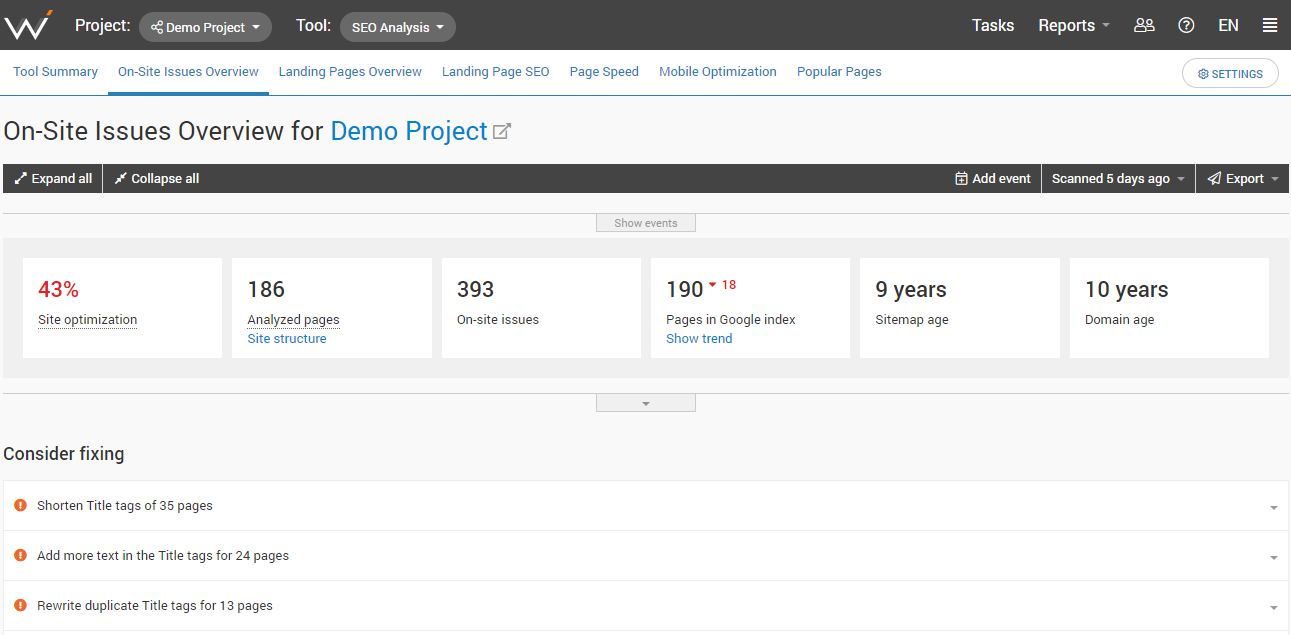What’s the secret to winning at SEO in 2020?
If you want to outrank your competition, there are three things you will need:
- The best content you can produce.
- The best content distribution plan you can design.
- And the best site optimization you can muster.
You know you want to excel in them all. And luck is already on your side!
You have found this SEO Strategy Guide for 2020 with actionable tips for all three.
Download it now for free. You’ll definitely want to give it a read later.
If you want to outrank your competition, there are three things you will need: the best content, the best content distribution plan, and the best site optimization.
1. Search-Intent Oriented Content
The web has a content problem. There’s just too much of it.
Search Google for literally anything, and the total number of results will be in the hundreds of millions – and it’s an everyday thing.
What’s more, nobody expects all of those results to be good.
However, users expect to see something good on the Page 1 of Google.
Can you imagine digging through those millions of results to find only a dozen that deserve to be displayed there?
That’s what Google does every day, over 79,000 times per second.
Now, users might not occupy themselves with how Google is getting it done. But you, as a website owner, are different: you need to know the ins and outs of online search because you have content to promote.
How does Google decide which pages deserve to be at the top?
There are over 200 major ranking factors, but it all boils down to one thing: who’s the best at being helpful to users. Or, in SEO terms, at satisfying user search intent.
So how do you pull that off?
Have a Clear Grasp of What Exactly You Are Offering to Your Users
There was a reason you created your site in the first place. This reason is the foundation of your entire plan.
It could be selling products, or spreading information such as news and research, or maybe entertaining visitors with your original content.
What makes the “why” behind your creation so important?
If you can name it with clarity, then it brings you to the next step of the plan: the kind of people you want to come to your site.
Your relationship with them is going to decide your site’s fate – they are your target audience.
Once the “why” and the “who” are decided, they are followed by the “how”. The reason there are many different types of websites is because some of them are better suited for specific tasks than others.
For example, ecommerce stores are the best for selling products, and blogs are great for sharing articles.
If you aren’t using the best way to present your content to users, you should rethink this part before everything else.
Many site owners stumble on this first step because they don’t think about what they are doing.
Be better than that.
Pick Keywords That Will Lead Users to Your Content
Users try out all sorts of search phrases in Google, and only a precious few of them will be any good for your site.
The trick is to find those few phrases and turn them into your chosen keywords. So, how do you know you’ve found what you need?
- They clearly reflect what you have to offer. Short, vague keywords like “buy boots” won’t be of any use to you. Even if a miracle lets you outrank the big brands, you’ll still risk bringing in users who don’t want the kind of product you have. Try optimizing for more specific phrases like “winter boots for women”.
- They have a high search volume. The more people use a search phrase in a given area, the more people you can turn into your users. Keywords with a low search volume can also be useful, but only when you use many at once to make up for their individual low potential.
You can find search intent-oriented keywords with the Get Suggestions tool.
Proceed to Create High-Quality Content
In spite of how hard it is, people are getting better at making great content, and the quality standards keep rising.
Fortunately, the core principle remains the same: give users the best version of the thing they are looking for.
How do you make such content?
- Research what the users want, as accurately and in-depth as you can. Users always want more details. If they can get those details from you, then you already have an advantage.
- Make your content visually appealing. As humans are visual creatures, you should know how to make a good first impression and make it last.
- Provide the best user experience you can. Let nothing on your site get on the users’ nerves. You are supposed to be helping them and making them feel welcome.
- Address the users’ pain points. If you revive their problems in their heads, it will make them hungrier for the solutions you are about to offer.
- Give detailed solutions to the users’ problems. Often users don’t know about all the pitfalls they can encounter on the way to their goal. Be sure to include solutions to those issues too: that’s what real experts do.
- Seal the deal with a call-to-action.
And if you connect relevant pieces of content on your site with links, you can turn the user journey into a cycle, ensuring they’ll keep using your site (at a later time, if not immediately).
It will be even easier for them the next time, since they are already familiar with the whole process. Example: “people also buy” on ecommerce sites.
2. Keyword Research & Optimization
Have you figured out how to make your users’ dream content?
Great job! You have a good reason to be proud of yourself if you have pulled it off.
Now it’s time for the next step: helping users find your content in search engines. This part requires keywords.
In the previous section, it was said that your content needs to be tailored to users’ search intent. The same applies to keywords.
Phrasing reflects what exactly users are looking for, so keywords phrased with a specific intent in mind are the best at bringing in the audience you need.
Examples:
- Plumber in my city: Your site is for users from your city who need plumber’s services.
- How to remove rust off my sink: You provide instructions for removing rust stains from metal surfaces in bathrooms and kitchens.
- Sell my old books: You buy books (and likely other things too) from people who don’t need them anymore.
What’s the best way to find such keywords?
Most likely, you will be starting with some ideas of your own. But you won’t know if those ideas are good unless you somehow test them out.
That’s where SEO tools come in. This is a job for a keyword finder like Get Suggestions.
Just enter what you have in mind and press Search. The Google global searches column will show the search volume for every keyword in the table.
Sort the table by this column to make it easier to find the best keywords.
If you plan to rank in and get traffic from a particular region, you can narrow your keyword search down to a specific geographical area in the Settings (or by clicking on Add location).
In this case, the Google global searches will be called Google local searches.
Note the All keywords filter. Clicking on it opens a menu where you can opt to show only regular keywords or only question keywords.
The Question keywords filter is particularly useful if you want to optimize your site for voice search.
There are a couple more ways to find keywords.
- From Google Search Console: If you have connected your WebCEO project to your Google Search Console account, it will start drawing data from Google. Then you can check out the Keywords from Google Search Console tool for all the various queries that bring your website traffic after being found in search. It will also show the usefulness of each query through statistics such as click-through rates and average ranking positions taken from global data over the past 30 days.
- From your competitors: This is a two-step process. What keywords do your competitors use to optimize their sites? First, enter their URL address in the Spy on Competitors tool to find out. Add the keywords you’d like to rank for yourself to the keyword basket, then open the Competitor Rankings by Keyword report to check their rankings for those keywords. If you see someone rank poorly for a good keyword, start using it yourself – it’s an easy way to outrank them.
That covers keyword research.
Once you have a list of keywords you want to use, it’s time to optimize your site for them. Make sure to include everything from your list at some point!
- Page URL addresses.
- Titles.
- Meta descriptions.
- Image filenames, ALT attributes and captions.
- H1-H4 headings.
- Anchor texts of internal links.
- Other text.
3. Competitor Research
How do you measure a site’s success?
You can judge it by its rankings, traffic, conversions, and the revenue it makes.
Ultimately, this SEO strategy is supposed to make you more successful than your rivals in the niche.
I bet you already have your eye on a few competitor websites that you want to beat. And that will be much easier if you can view their metrics whenever you want, too.
There’s also the possibility they aren’t really your rivals, and you need to be fighting someone else.
What’s the word for beating someone at their game only to find out you have won nothing?
“Awkward” is the nicest thing that comes to mind.
Let’s remove all awkwardness from your path to stardom.
Our starting point is the Dangerous Competitors tool.
Click on the Settings button.
- Keywords tab: Enter the keywords you intend to rank for.
- Search engines tab: Select the search engines where you want to rank.
- Mirrors & Subdomains tab: Enter the URLs of your site’s mirrors and subdomains (if you have any). It will let the tool know that they shouldn’t be considered competitor sites.
- Competitors tab: Enter the URLs of the competitors you already know.
- Search results tab: Check the boxes of all types of search results you want to scan.
- Local searches tab: Select regions like states, counties or provinces to show keyword demand for (if you want to rank somewhere in particular and not just globally).
Once you’ve finished filling everything out, click Save.
The tool will generate a graph and a table. Look for the sites that are above yours in the table. They can be your real, most dangerous competitors.
Note the “most likely” part. To be completely sure, visit those sites personally and see if they really specialize in the same field as you.
Irrelevant sites may appear if they happen to rank for the keywords you’ve entered without actually sharing a target audience with your site.
With this, you have discovered your true rivals. Fight them with every trick in the book:
- Creating content.
- Promoting content.
- Providing a superb user experience.
- Building a cordial relationship with users.
- Optimizing your site.
And watch the metrics which reflect your progress: there’s no better way to find out if something is wrong.
- Rankings: compare your ranking positions to theirs for your chosen keywords in the Competitor Rankings by Keyword
- Backlinks: check the Competitor Link Profile report for everyone’s link profile statistics, including the total number of backlinks and domain authority.
- Traffic: the Competitor Traffic report has everyone’s traffic data for the last 12 months.
Another hugely important matter: competitor backlinks.
If you can look them up, you can find a huge number of sites where you can build backlinks to your own site.
How do you do that?
Just feed your rivals’ URLs to the Competitor Backlink Spy.
Then sort the table by the Domain Trust Flow column to put all the best potential link sources where you can see them.
4. Page Speed Optimization
Something has been bothering me for the longest time. So, electricity travels at the speed of light, right?
The Internet runs on electricity, and data packets move at the same speed. Then how come there isn’t even a single website which can load at the speed of light? It’s unfair.
Of course, humans cannot comprehend such tremendous speeds anyway. So we are perfectly fine with the next best thing, which we usually describe as “in the blink of an eye”.
That’s how fast we want websites to load, and we get really upset when it doesn’t happen.
Fortunately, some people are slow blinkers. That must be why most users are comfortable with a couple of seconds of loading time. Any more can cause a problem.
Scan your site with the Page Speed Insights tool to check its loading speed. If the score is low (100 is excellent), there are plenty of ways to make your site load faster:
- Host your site on a fast server.
- Host your site on a CDN.
- Optimize your images’ dimensions.
- Save your images in the right format.
- Compress images.
- Use fewer elements.
- Merge elements.
- Use gzip compression.
- Leverage browser caching.
5. Technical Audit
Errors are a nuisance no matter where you encounter them. Users won’t be appreciative if you let your website go.
Would you let garbage pile up in your office where everyone can see it?
Of course you wouldn’t; it would be disrespectful to the people who visit you.
The place where you receive your customers should be kept clean and run like a well-oiled machine. Websites are the same.
What kind of issues on your site could be hurting user experience?
- Broken links
- Broken images
- Broken redirects
- Server errors
- Missing meta tags
- Indexing issues
- Crawling issues
- Orphaned pages
- Dead-end pages
- Schema markup errors
Look at how many things can go wrong when you are not even looking. But you can’t possibly keep an eye on your site every waking hour.
Good thing there are fully automated tools for such tasks, isn’t it?
I can recommend a couple. The first is the Technical Audit tool.
You can use it to detect the most common technical issues with your site, and then you can just proceed to fix them.
To make your job easier, you can (and it’s heavily recommended) set this tool to scan your site automatically as often as you want.
Once a week is good, but if you’d rather do it more or less often, it’s up to you. It’s all in the Scan Schedule.
You can even set the tool to send you alerts when you get site errors.
For that, click on Reports -> Email Alerts in the top menu.
The other tool of importance is the On-Site Issues Overview.
This tool detects SEO errors on your site, such as issues with meta tags (short, repeating or outright missing). It, too, can be set for automatic regular scans and email alerts.
What else do you need to keep your site free of errors?
The Robots.Txt File
If you don’t have one in the first place, the On-Site Issues Overview tool will tell you, but there may also be issues with the file itself.
Be sure to check that it’s formatted correctly and that it allows search engines to crawl your site’s content, and prevents them from crawling pages you don’t want to appear in search.
Sitemap
If you haven’t uploaded a sitemap, its absence can be picked up by the On-Site Issues Overview, too.
Use a validating tool to make sure your sitemap is formatted correctly.
Also, if your site has more than 50,000 pages, you are going to need at least two sitemaps.
Schema Markup Validator
If you are using structured data on your site, you should always test your marked-up pages for errors before rolling them out.
Google has a free Structured Data Testing Tool you can use anytime.
Want to See Steps 6-10?
To see the complete list of the most effective SEO tips and tactics, please download the SEO Strategy Guide: Beat Your Competition in 2020 below.
This guide was created exclusively for WebCEO users who wish to make the next decade one of their biggest triumphs. Sign up now to enter a bright future!
Enter the 2020s with 20/20 SEO vision!
Sign up to get your guide and 17 online SEO tools
The opinions expressed in this article are the sponsor's own.



